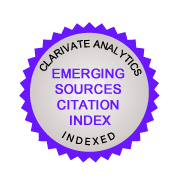Nota metodológica 1. Comité de ética: ¿cuándo, cómo y porqué?
Comité de ética: ¿cuándo, cómo y porqué?
Fanny Petermann-Rochaa, Alberto Pérez-Lópezb,*
a Centro de Investigación Biomédica, Facultad de Medicina, Universidad Diego Portales, Santiago, Chile. b Departamento de Ciencias Biomédicas, Facultad de Medicina y Ciencias de la Salud, Universidad de Alcalá, España
* alberto_perez-lopez@hotmail.com
Desde el punto de vista bio-psico-social, la investigación en seres humanos y animales se entiende como cualquier actividad que implique la recolección sistemática o análisis de datos con la intención de generar nuevo conocimiento. En este contexto, los comités de ética de la investigación, o bioética, tienen como objetivo evaluar la rigurosidad ética, metodológica y legal de los diseños y protocolos de investigación, in vivo, in vitro o ex vivo tanto en seres humanos como en modelos animales y celulares. Esta evaluación debe realizarse antes que cualquier proyecto sea llevado a cabo.
Es importante destacar que, en relación con la investigación específica en seres humanos, los estándares internacionales hacen hincapié en dos áreas en particular:
- Investigación: cualquier actividad que implique la recopilación o el análisis sistemático de datos con la intención principal de desarrollar o contribuir al conocimiento generalizable.
- Seres humanos: aquellos que se vuelven (i) individualmente identificables a través de la recolección, preparación o uso de material biológico o médico u otros registros, por parte del investigador; o (ii) expuesto a la intervención, observación u otra interacción con los investigadores.
Desde un punto de vista histórico, la evaluación de la ética de la investigación comienza a tomar relevancia durante los juicios de Núremberg, al término de la Segunda Guerra Mundial, particularmente para el Tribunal Militar Internacional, como consecuencia de los actos cometidos por los médicos nazis entre 1930 y 1940, quienes realizaron experimentos que llevaban al límite la vida humana. Tras este proceso, se elaboró el Código de Núremberg1, el cual recoge diez actuaciones claves para garantizar el respeto a las personas que participan en cualquier investigación, entre las que cabe destacar el consentimiento informado voluntario, el daño mínimo, mayor beneficio que riesgo y la capacidad del participante para retirarse en cualquier momento.
Posteriormente, en junio de 1964, se incorporó la primera declaración de principios éticos para la investigación médica con seres humanos desarrollada en la 18ª Asociación Médica Mundial celebrada en Helsinki, Finlandia. En esta asamblea, se incorporaron los principales principios éticos que debían presentar la investigación en humanos para promover y asegurar la protección de su salud y derechos (mayor información puede ser encontrada en el siguiente enlace).
Por el camino, pueden resaltarse otros sucesos de relevancia, como el Informe de Belmont en 1974 que por primera vez recoge tres principios éticos fundamentales: beneficencia, respeto y justicia.
Estos y otros sucesos han permitido que, en la actualidad, la investigación deba cumplir una serie de pautas éticas mínimas que aseguren que quienes participen de una investigación conozcan y comprendan toda la información necesaria acerca del estudio de investigación y, una vez logrado esto, tome la decisión de participar de forma libre, sin que medie ningún tipo de coacción, influencia, chantaje o intimidación.
Recientemente, el uso masivo de las plataformas digitales ha provocado un aumento de las investigaciones realizadas a distancia a través de internet (formularios webs). En este contexto, es muy importante preguntarse si este tipo de investigaciones deberían o no contar con la aprobación de estos comités. Si bien preguntas abiertas en un ambiente online público no requerirán consentimiento informado, aquellas que se realicen en un ambiente online privado (donde se recolecte información escrita, oral o visual) deberán contar con aprobación de dicho comité junto con el uso de consentimiento informado, el cual deberá encontrarse al principio de la encuesta, informando que los datos recolectados serán anónimos y confidenciales, evitando pedir información sensible como dirección exacta.
Ya sea online o de forma presencial, es fundamental que un protocolo de investigación cuente con los siguientes aspectos que serán evaluados por el comité de ética:
- Antecedentes y justificación de la propuesta de investigación.
- Objetivo y resultados esperados del estudio y una breve declaración sobre su relevancia.
- Metodología, procedimientos, plan de análisis, muestreo y cálculos del tamaño de la muestra.
- Limitaciones del estudio, así como también evaluación del riesgo-beneficio para las personas y comunidades involucradas.
- Presupuesto y cronograma.
- Referencias
- Documentación de consentimiento informado.
- Instrumentos que se utilizarán durante el proceso de estudio (cuestionarios, recogida de muestras, etc).
Finalmente, los comités de ética y bioética se encargan de velar porque se cumplan los principios éticos, los cuales regulan la investigación con seres humanos, son universales y fundamentales. En seres humanos, estos principios velan por el respeto por las personas, la beneficencia y la justicia.
Para tener más información frente a situaciones específicas, se recomienda consultar las guías internacionales CIOMS.
Referencias:
PAHO. PAHO Ethics Review Committee (PAHOERC). Retrieved from https://www.paho.org/en/paho-ethics-review-committee-pahoerc
Shuster, E. (1997). Fifty Years Later: The Significance of the Nuremberg Code. New England Journal of Medicine, 337(20), 1436-1440. doi:10.1056/nejm199711133372006
WHO. Promoting compliance, risk management and ethics. Retrieved from https://www.who.int/about/ethics
WMA. (2022). WMA DECLARATION OF HELSINKI – ETHICAL PRINCIPLES FOR MEDICAL RESEARCH INVOLVING HUMAN SUBJECTS. Retrieved from https://www.wma.net/policies-post/wma-declaration-of-helsinki-ethical-principles-for-medical-research-involving-human-subjects/










